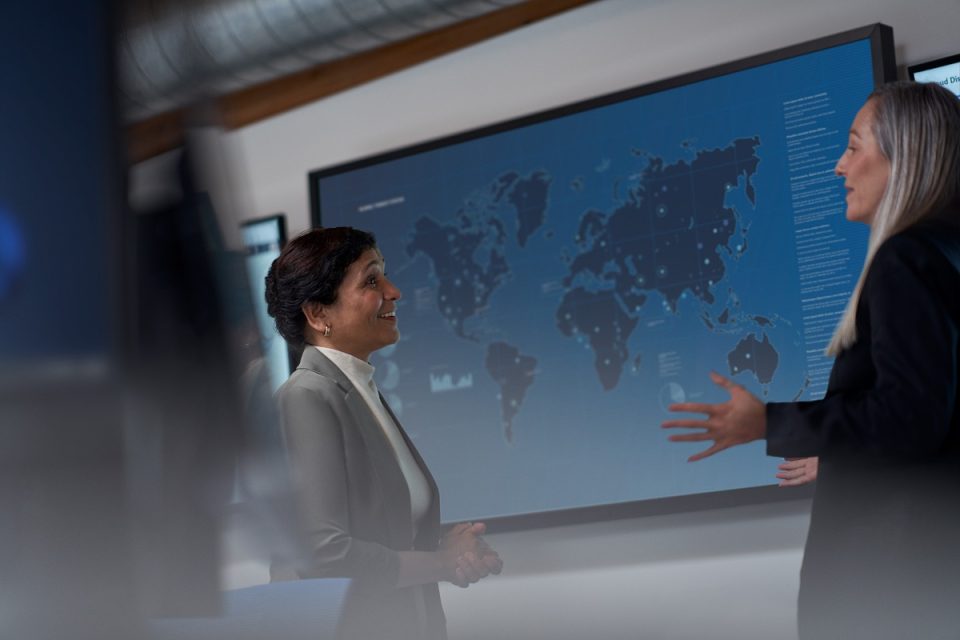
Cybersecurity has gone from being a backroom IT concern, to being a boardroom issue. Which makes a lot of sense. The cost of cybercrime to the global economy grew to a staggering €5.5 trillion in 2020, double the amount in 2015. Cybersecurity gives business leaders confidence to embrace the shift to the digital economy and reap the benefits of their investment in it. Europe’s data economy will be worth €829 billion by 2025, and investments in ‘digital’ and ‘sustainability’ will create up to 5.7 million new jobs across the region by the end of the decade.
But as the world around us becomes more digital, the definition of what it means to be safe and resilient is also evolving. And as businesses digitize, it’s important to recognize that the benefits of hybrid work, smart supply chains and intelligent internet of things come with new and different risks to manage. So, what does it mean, today, to be secure?
Security is a mindset
One thing is clear – cybersecurity cannot and should not be treated as a product that gets added on top of or parallel to other business software solutions. Increasingly, companies rely on security by design, meaning any product and service, is designed with built-in security elements.
Think of it this way – when you buy a house, there are (usually!) already doors and windows with proper locks right from the start, you don’t need to build a wall around a door-less home.
By weaving security throughout the fabric of your organization – culture, operations and systems – you’re better equipped to both protect against an attack before it happens and respond and recover as quickly as possible if it does. This kind of protection isn’t simply nice-to-have, it’s fundamental to better business resilience.
Take the example of Romanian robotic process automation (RPA) software provider, UiPath. The global company’s software robots interact with computer systems just like a human being would, ingesting data, responding to it, and communicating with other systems – making it an attractive target for a number of cyber threats across security, privacy and compliance.
As such, UiPath uses Microsoft 365 and various Azure security services to create a holistic cybersecurity strategy that connects both the security and engineering teams. As Gabriel Necula, Security Operations Engineer on the Incident Response Team at UiPath says, “At the end of the day, security is a mindset.”
From do-it-yourself to do-it-together
Examples like UiPath point to a shift in the mindset we’re seeing across the market – where the core idea of what it means to be ‘safe and resilient’ has evolved. Countries and organizations are moving from a strategy of “do it on your own” to inter-dependence with peers with shared values.
Cybersecurity is a prime example. There used to be the perception that security means having your own datacenter. As technology evolves – and real-life happens – it’s becoming clear that protecting digital assets has now become more important than its physical location.
For many organizations that means switching from their own datacenter to highly secure and trusted public cloud services, which monitor, assess and respond to attacks. Cloud-based solutions present many advantages in managing evolving threats and staying on top of the game.
For example, at Microsoft we monitor more than 43 trillion security signals daily across our network – including the cloud, endpoints and the edge – so we can catch what others miss.
In 2021, we blocked over 70 billion threats. Our comprehensive security solution helps protect our customers’ entire digital estate, whether they have adopted a single, multi- or hybrid cloud approach. This helps them simplify their approach to security through consolidation – and realize up to 60% cost savings, so they can do more with less.
Product, platform and partnership
The global events of the last few years have brought unprecedented change to the physical and digital worlds. And, relatedly, the threat of cybercrime is constantly growing. As Siim Sikkut, former CTO of the Estonian Government, once said, ‘if we are not good at cybersecurity, we cannot be digital’.
Yet, according to an IDC study commissioned by Microsoft, only half of CEE companies have a comprehensive cybersecurity strategy. In a landscape where anything less than comprehensive security is no security at all.
So, as leaders, we have to ensure our organizations are working together towards a more safe and resilient digital economy. At Microsoft, we’re committed to playing our part in helping build a more secure digital future for CEE; working with partners and peers who share the same values to provide our customers with the most comprehensive, integrated solutions available. Simply, to secure more with less.





